Source: New Atlas
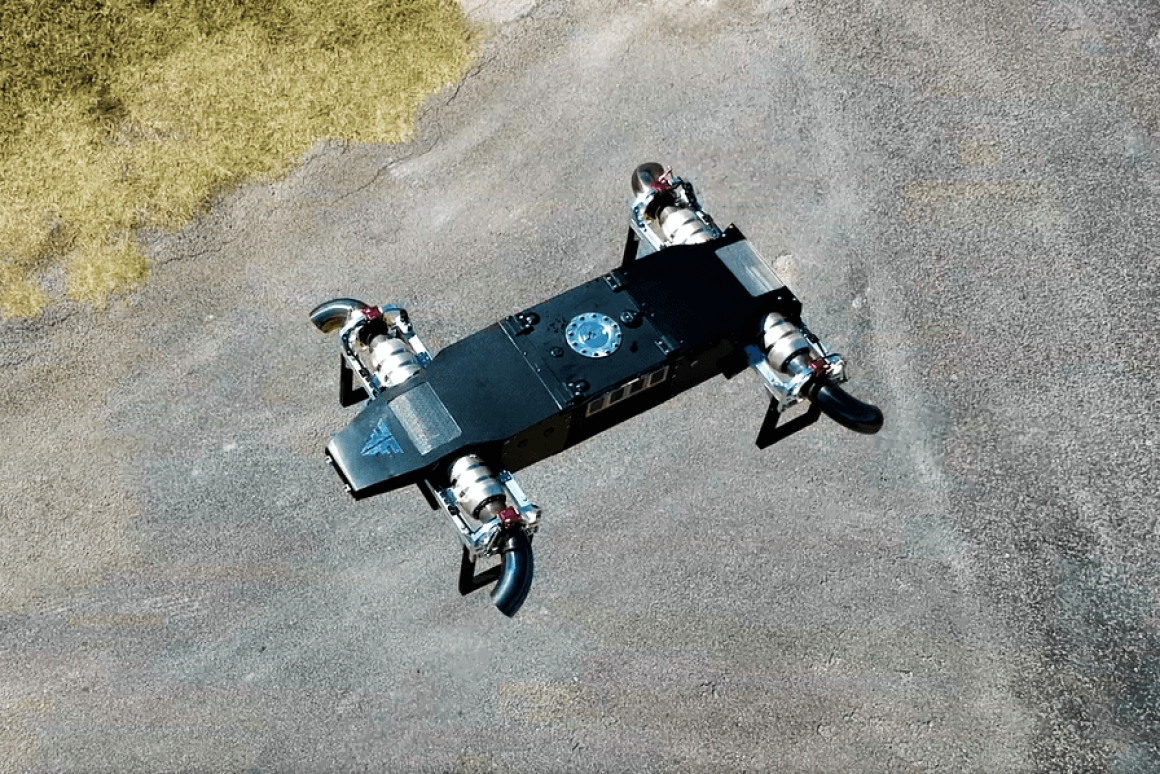
ABQ JetQuad prototype capable of speeds up to 402 km / h
While propeller planes still take place, sometimes the extra speed and thrust that the jet engine gives are needed. FusionFlight from Dallas, Texas, applied this approach to quadrocopters, and the result was an AB5 JetQuad.
The company claims that the AB5 is “the smallest and most powerful jet drone with vertical takeoff and landing.”
Instead of the usual four electric motors and propellers, the current prototype has four diesel microturbine jet engines that deliver 200 horsepower (149 kW) at full power. Thanks to the patented thrust vector control system known as H-Configuration, the thrust of these engines can be directed either to vertical movement during takeoff and landing, or to horizontal movement during flight.

According to available information, the serial version of the aircraft will reach a maximum speed of 483 km / h with a 19 liter tank full, which is enough for 30 minutes of freezing in the air or 15 minutes of movement. In the future, the addition of components such as afterburners can significantly increase the speed of the drone.
The maximum load capacity of the drone will be 18 kg, while the load can be fixed on the drone itself, or suspended on a cable - the company says that the latest engines will not spoil the cargo, since the thrust will never be sent directly under AB5.
The declared weight of the drone itself is 23 kg, a full tank will add another 18 kg.
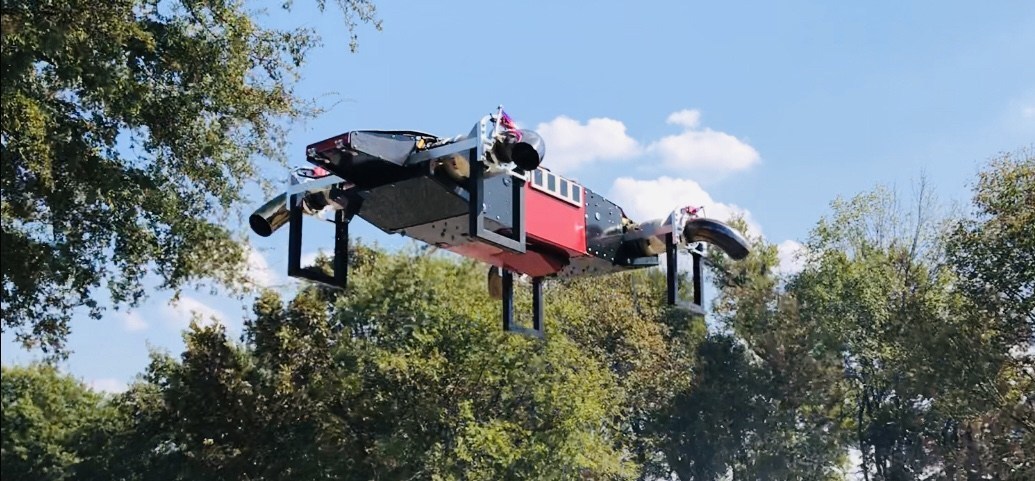
FusionFlight CEO Alexander Tates says the AB5 can enter the market by 2021 at prices ranging from $ 200,000 to $ 250,000, depending on the model. Potential customers are likely to focus on speed and power.
“Jet engines can deliver significantly more power than electric ones, and also allows drones to fly at much higher speeds,” says Tates. “Diesel with equal weight with lithium batteries stores 40 times more energy, and refueling lasts several minutes, while recharging the batteries takes several hours.”
You can see the takeoff and hovering of the prototype in the air in the next video.
Source: FusionFlight
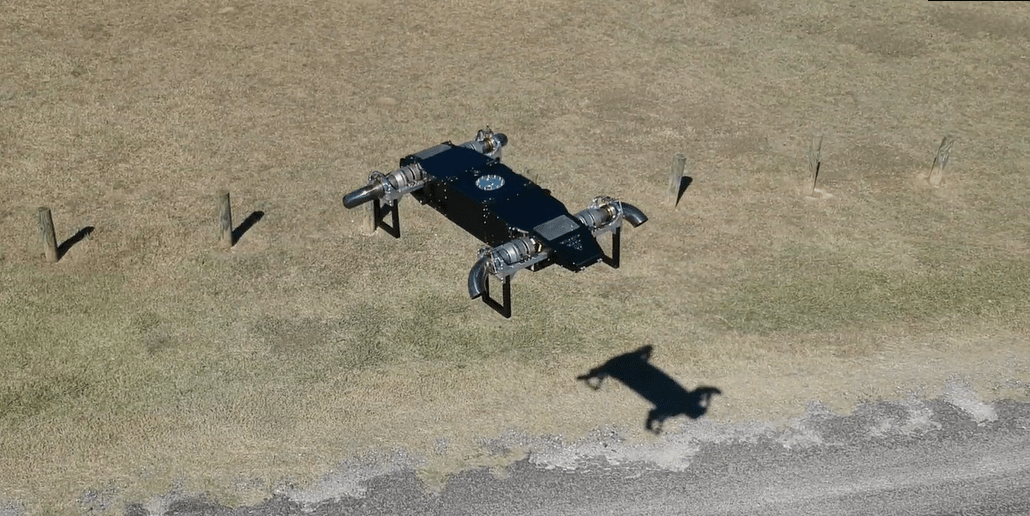
Vertical take-off and landing four-turbine drone
AB5 JetQuad “Luck” is a new type of aircraft. This is not a quadrocopter, nor a helicopter, nor an airplane. Four microturbine jet engines deliver 200 horsepower at full throttle and operate with a patented traction vector control system. This system is called “H-Configuration” - this is the first system in history in which jet engines operate on both vertical and horizontal flight, as well as provide complete control of the position of the drone. The result is a compact, fully self-contained diesel aircraft that can take off and land from almost any surface, and at the same time is capable of operating at high speeds and has a high payload. FusionFlight has been developing JetQuad since 2016. You can read some of the articles published over the years.
It is also worth noting that a high-precision thrust vector control system (SUVT) has exceptional advantages compared to modern multicopter. SUVT is driven by high-torque servomotors, which operate much faster than electric motors and propellers on other drones. As a result, JetQuad is more flexible and better managed. SUVT also allows you to direct the exhaust of the engine towards the stern of the drone during horizontal flight, which means that JetQuad can use the power of all four engines and achieve maximum speeds that are unthinkable for close-sized aircraft with vertical take-off and landing.
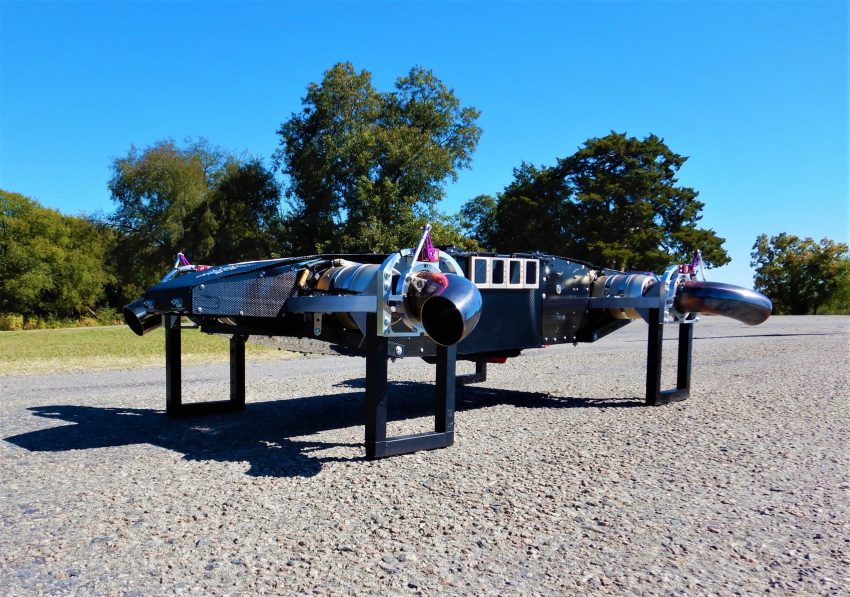
Compact and lightweight
The AB5 JetQuad is specifically designed to be easily carried by one person. Without refueling and cargo, the drone weighs approximately 22 kilograms and has convenient handrails. In addition, the small size of the drone means that it can be transported using conventional land vehicles. The production version of JetQuad will have a retractable landing gear equipped with shock spring systems for additional cushioning during landing and providing additional flexibility when taking off and landing on uneven surfaces.
Significant Payload
The smooth and flat shape of the JetQuad provides the drone with good aerodynamics, as well as the ability to accommodate many different loads. Weights of various weights and sizes can be easily installed in front, back and top. Particularly large loads can be placed at the bottom of the aircraft in a configuration very similar to the NASA’s Curiosity Sky Crane system.
In a Sky-Crane configuration, the JetQuad can freeze at a height of 4.5 meters above the discharge point and slowly lower the load to the ground with four electric coils. SUVT are specially designed for the removal of hot gases from the vehicle during hovering in the air, which allows not to burn cargo during flight and during unloading. Moreover, jet engines can also generate electricity to power the sophisticated computer vision systems necessary for the safe operation of such a high-speed drone.
Simplicity and scalability
The design of the JetQuad is simple and elegant. The drone is assembled from several modules, and each module can be disassembled and replaced with minimal effort. The complete design of the drone contains only 8 moving components - 4 turbines and 4 servomotors. Such a small number of moving parts gives excellent reliability and reduces production costs, especially compared to helicopters of the same class. In comparison, helicopters have hundreds of moving parts and require frequent and expensive maintenance.
The simplicity of the design of the AB5 JetQuad also leads to scalability. The larger version of JetQuad, equipped with large fuel tanks, can accommodate any aircraft jet engines. Such a drone can carry especially heavy loads instead of helicopters of similar size that are expensive to rent. The same enlarged platform can also make it possible to create the first flying machine without external propellers. Such a car will look and feel like a regular car, and will be able to park in a standard parking space.
In addition, jet engines are inherently simple and reliable devices that can also be enhanced with additional functions to significantly increase their efficiency, as a result of which an even faster and more lifting aircraft can be obtained. For example, afterburners can be easily combined with the patented SUVT, as a result of which JetQuad will be able to move faster than the speed of sound - no technology in the field of drones with vertical take-off and landing has such a potential. Finally, the JetQuad form factor is ideal for use in a chassis. The bearing body will significantly improve aerodynamics and, most importantly, provide a natural lift during flight at high speed. An additional lift means that the operation of the engines can be slightly reduced, which ultimately saves fuel and significantly increases the life and range of the aircraft.
Key benefits: jet engines and diesel
The performance of the AB5 JetQuad is higher than that of any drones built using other technologies, for two reasons: the use of jet engines for propulsion and diesel as fuel. Microturbines (small jet engines) have the best power density among all known jet engines. This means that jet engines can produce significantly more power than comparable-sized internal combustion engines or electric motors (which are used in the construction of most modern drones). In addition, diesel fuel is available anywhere in the world and has 40 times more energy consumption than conventional lithium-polymer batteries, and it takes minutes, not hours, to refuel, as is the case with battery charging. When assembled, the device is a very compact and reliable drone that can fly faster than any other drone of the same size, and also has a large payload.
Noise levels
Obviously, 4 jet engines make a lot of noise, so in the current configuration of JetQuad it is quite noisy - about 120 dB, if you stand next to it. However, there are several noise reduction technologies that remain to be explored, such as modified intake and exhaust systems, as well as active noise reduction and the use of built-in speakers. Future versions of JetQuad will certainly be quieter thanks to these technologies, but at the moment, the drone can only work in conditions that do not require low noise. Moreover, it is also worth mentioning that noise characterization plays an important role. So, for example, the sounds of the helicopter blades at low rims irritate the human hearing more than the uniform whistling of jet engines. It is important to note that the engines in JetQuad operate at higher speeds than in quadrocopters or helicopters (about 100,000 revolutions per minute). The resulting high-frequency sound is barely audible even at small distances from the drone - it dissipates very quickly in the atmosphere. For comparison, the sounds of helicopter blades at low speeds produce a low-frequency sound that travels far and is heard for many kilometers. Watch the video below (test number 2) to better understand how JetQuad sounds.
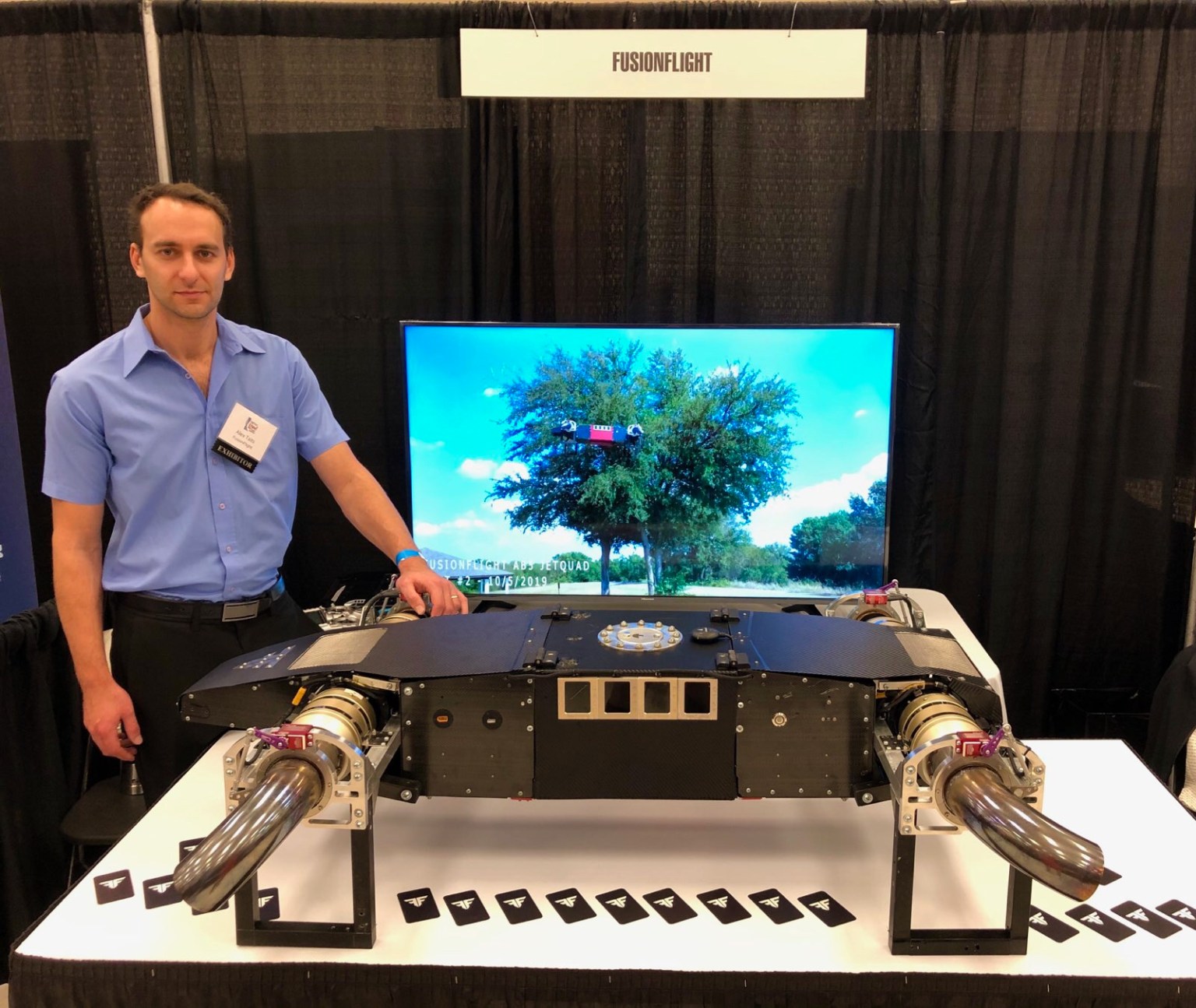
Patent Application “AirBooster Technology”
All manned and unmanned structures that use our current platform (AB5 - horizontal configuration of engines in the shape of “H”), as well as our previous platform (AB4 - vertical configuration of engines) are protected by a patent pending, the name of the technology is “AirBooster Technology”. The patent was filed in 2016 and is currently under consideration by the United States Patent and Trademark Office.
Specifications
Please note that these specifications apply to the current AB5 prototype. The production model will have optimized aerodynamics and SUVT, which will lead to improved performance.
Model: AB5
Fuel tank capacity: 22.7 liters
Weight of full refueling: 18.1 kilograms
Fuel type: diesel
Unladen drone weight: 22.7 kilograms
Shipping Weight: 18.1 kg
Total take-off weight: 59 kilograms
Total traction on separation: 72.6 kilograms
Craving-to-weight ratios at launch: 1.2
Maximum engine power: 200 horsepower
Duration of work (soaring): 30 minutes
Duration of work (cruising speed): 15 minutes
Cruising speed: 428 km / h and above
Flight range (round trip): 40 kilometers
Dimensions: 1.2 mx 1.2 mx 0.6 m
Maximum fuel consumption: 1.3 liters per minute
Height (estimated): 9144 meters and more